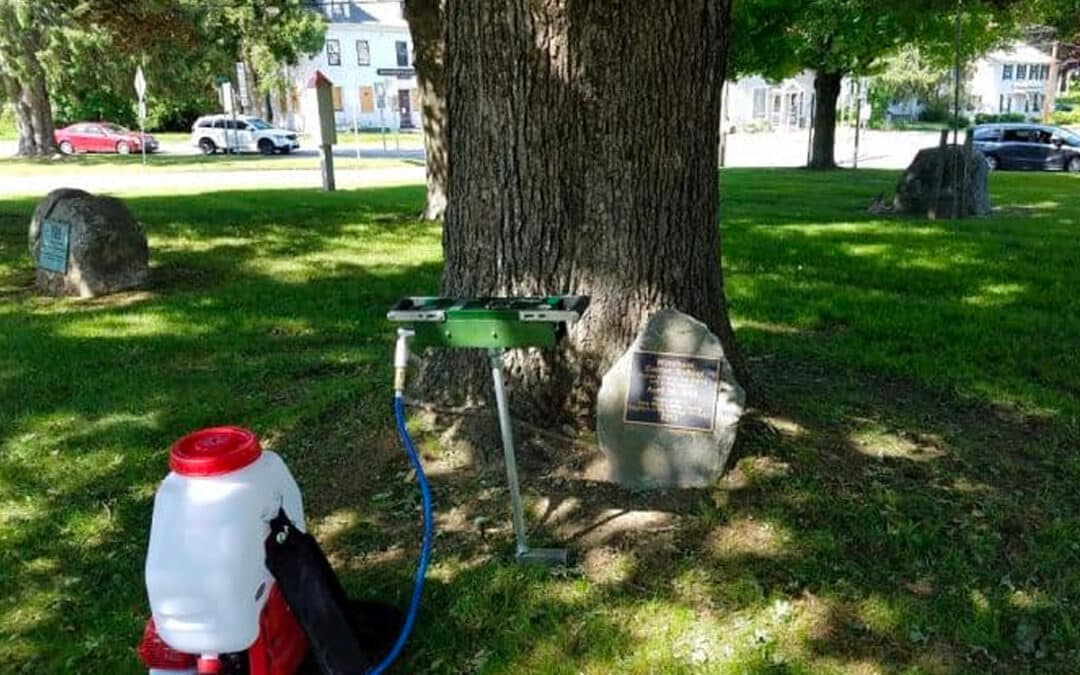What is Plant Health Care?

What is plant health care?
Plant health care is the promotion of plant and tree health through more holistic methods. Just as people receive medical care to remedy problems instead of just treating their symptoms, there are ways to care for your trees and help them stay healthy for longer, rather than treating the ‘symptoms’ of unhealthy trees via harsh pesticide and insecticide regiments and tree removals.
Here at Green Valley Tree, we continue to grow our Plant Health Care program to include the latest science-based arboriculture practices and to help you preserve your property value!
What is all that stuff? How do I know if my trees need it?
Mulching: Adding mulch around the base of a tree can help regulate the temperature of the soil, protecting tree roots from temperature extremes; increase the nutrient density of the soil; and keeps moisture from evaporating from the base of the tree, allowing the tree to retain more water. However, mulch piled against the trunk in mulch ‘volcanoes’ can damage trees severely. Always make sure your mulch is applied properly! The image to the right is an example of a nearly complete proper mulching job.
Aeration: Compacted soil can inhibit the root growth of trees and bushes. To test the compactness of the soil around your tree, use the ‘screwdriver test’: it should be easy to push a screwdriver into the ground around the tree’s base. We use an airspade to decompact and aerate the soil (pictured on top of this article). This tool uses high-pressure air to knock compacted soil loose around the base of the tree without harming the roots. We also sometimes add Bio-Rush, a fertilizer, to the soil to enrich it. Properly spreading mulch around the tree is the final touch!
Growth Regulator Treatments: Growth regulator helps trees increase fibrous root mass, become more drought and heat-tolerant, develop disease resistance, and increase their durability, hardiness, and general health. Treated trees need less trimming, grow slower, stay smaller, and look healthier. When timed properly with trimmings, growth regulator can also help to shape trees to either retain a pruned appearance or look more natural.
Preventative treatments: We can treat some trees preemptively to protect against future disease or infection. The most common preventative treatment is a trunk injection of Ash trees to stop the infestation of the Emerald Ash Borer that has decimated national Ash populations.
Beech Leaf & Bark Disease has become a bigger issue over the past few years. We are ahead of the curve and ready to help protect your beech trees from these new diseases!
Remedial treatments: Some of our most common treatments are to address many types of scale, nematodes, and hemlock woolly adelgid. These are all insects that suck the sap from trees, eventually killing them. We also do treatments to eliminate insects, gypsy moth caterpillars, and fungi.
Education Station: The Value of Trees
Why spend money on Plant Health Care?
Spending a little bit of money keeping trees on your property healthy will save you money in the long run! Not only will you decrease the likelihood of an expensive tree removal or tree emergency, but properly maintained trees provide many benefits beyond the obvious curb appeal. They can cool shaded areas by 20-45°F and help shield buildings from winter winds. This contributes to energy savings! Properly placed trees can reduce energy needs for air conditioning 30% and for heating energy by 20–50%, and Department of Energy computer models place the energy cost savings of just three properly placed trees at between $100 and $250 annually per average residence. Trees also hold community-wide benefit: crime rates and pollution decrease when the number of trees in an area increases.
Check out the Arbor Day tree facts page here and the infographic below for more information on the benefits of trees! You can also estimate the financial benefits of a tree in your yard here.

